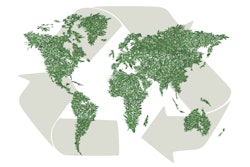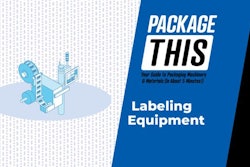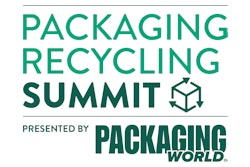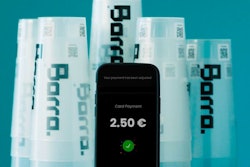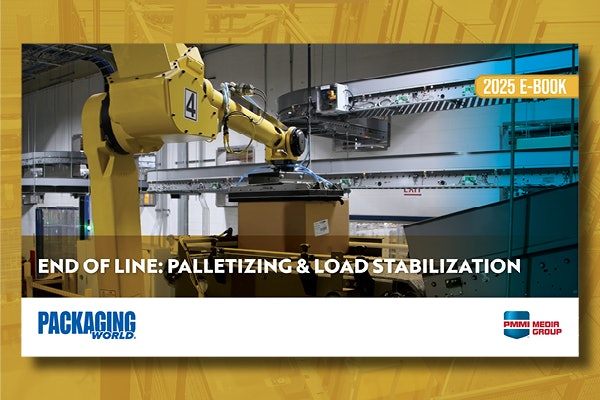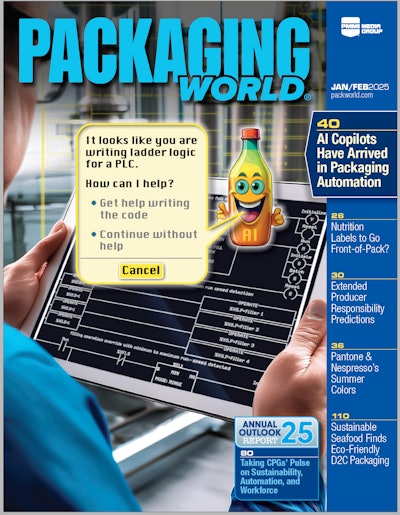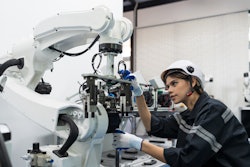On April 2, 2002, Cargill Dow, LLC, now NatureWorks, LLC, celebrated the grand opening of its Blair, NE, plant for the manufacture of polylactic acid (PLA) corn-based biopolymer. It was the first global-scale manufacturing plant capable of making commercial-grade plastic from annually renewable resources and was heralded as “a second industrial revolution” by then President and CEO of Cargill Dow Randy Howard.
What followed was a frenzy of interest by the packaging community, which saw the development as the silver bullet that would solve the issue of the depletion of natural resources used for packaging by decoupling plastic from fossil fuel as well as address plastic packaging pollution (PLA is biodegradable and compostable).
At the celebration, Dr. Patrick Gruber, then Vice President and Chief Technology Officer of Cargill Dow, said, “The idea of creating a more sustainable business model is to establish a new industrial system where society can go on forever without depleting the earth’s natural resources, without compromising people, and helping to create a better quality of life.”
While the material, now branded as Ingeo, found applications in foodservice packaging and film wraps, among others, it was not a silver bullet after all. Concerns soon arose about its use of food crops, the energy required to grow and harvest the crops and produce the materials, PLA’s contamination of recycling streams, the lack of composting infrastructure in many countries (making its compostable properties moot), and PLA’s low resistance to high heat and humidity, low heat distortion temperature, low flexibility, and long mold cycle time.
Since then, NatureWorks has addressed many of these issues and has expanded into other applications with the help of partner suppliers, but it has been a long process. In the meantime, a number of other companies have begun commercial-scale production of biopolymer resins with other functionalities that use feedstocks as varied as sugarcane, potato starch, wood chips, milk protein, and even air.
The goal for all these suppliers is to produce a renewable resource-based plastic with the same, or better, functionalities and qualities as their conventional, petroleum-based counterparts, while creating fewer greenhouse gas emissions, providing an environmentally-friendly end-of-life solution, and reducing packaging’s dependence on fossil fuel—all at a price point viable for end users.
In Part I of Packaging World’s Special Report on Biopolymers, we examine several types of bioplastics now available as well as share examples of commercial applications using these materials.
Drop-in plastic: Gen 1
First introduced commercially with the launch by The Coca-Cola Co. of its PlantBottle in 2009, “drop-in plastics” now dominate the bioplastics market. These plastics, which include bio-based polyethylene and bio-based PET, are non-biodegradable materials made from renewable raw materials that present identical technical properties to their petrochemical counterparts—including the ability to be recycled. This is a key selling point for those brand owners that support recycling but would like to reduce their use of petroleum-based plastics.
Says Katrina Schwede, Head of Communications for European Bioplastics, the association representing the interests of the bioplastics industry in Europe, “Drop-in plastics are the main drivers in the bioplastics sector. Bio-based plastics have the unique advantage to reduce greenhouse gas emissions. By replacing the fossil content in plastics with plant-based content, carbon is taken from the atmosphere and bound in the material. These bio-based materials are then used to manufacture a broad range of products with a potentially neutral or even negative carbon footprint, many of which are durable and can be reused or easily recycled many times. The overwhelming volume of bioplastics produced today are mechanically recycled; bio-based PE and bio-based PET, for example, are easily recyclable alongside their conventional counterparts in existing recycling streams.”
PET is made from two components: monoethylene glycol and purified terephthalic acid, which represent 30% and 70% of PET’s weight, respectively. Today, only MEG can be created from bio-based materials at commercial scale.
Coca-Cola’s PlantBottle uses 30% plant-based material sourced from sugarcane, blended with 70% petroleum-based materials. The bottle is fully recyclable and reduces carbon emissions by up to 25%, compared to petroleum-based PET. In 2015, at the Expo Milano world’s fair, Coca-Cola showcased the world’s first demonstration-scale PET plastic bottle made entirely from plant-based materials. The bottles used BioFormPX paraxylene produced by Coca-Cola partner Virent.
In 2011, Coca-Cola did launch a 100% plant-based bottle using a different drop-in plastic. It introduced a single-serve bottle made from 100% bio-based high-density polyethylene for its Odwalla juice. The material was sourced from Brazil-based chemicals and plastics company Braskem, which has since become the leading supplier of bio-based polyethylene in the world. Braskem’s bio-based resin, I’m Green™ Polyethylene, is made from ethylene derived from sugarcane. As the company explains, cultivation of sugarcane utilizes carbon dioxide and releases oxygen, which means I’m Green PE has a negative carbon footprint.
Braskem’s Green PE has been used in applications that include cosmetics packaging for a number of Procter & Gamble’s beauty brands, laundry detergent packaging for Seventh Generation, and a sunscreen bottle for Johnson & Johnson Brazil, among many others.
But I’m Green PE is not just being adopted by major CPGs, nor is it just confined to rigid packaging. One of the most recent applications for the material is a flexible pet-food bag for Evansville, IN-based Midwestern Pet Foods, Inc. The company is a fourth-generation, family-owned business that produces high-quality dog and cat food under the Earthborn Holistic Venture, Earthborn Holistic, PRO PAC Ultimates, and Sportmix Wholesomes brands.
Midwestern Pet Foods’ point of differentiation is its culture of product safety, quality, and innovation, says company President Jeff Nunn. In introducing its new Earthborn Holistic Venture line of limited-ingredient, grain-free, single animal-origin dog food, the company sought a package that would support its commitment to sustainability and the environment.
“We considered several packaging options for our new Venture line, finally opting for Braskem’s Green PE material, due to its new and distinct sustainability and recyclability features,” says Nunn.
“In addition to being earth-friendly, the bags had to perform,” he says. “They had to protect the food inside as well as give the line a fantastic shelf presence.”
The new bag—in three sizes used for six formulas, totaling 18 SKUs—was developed in less than six months, leveraging more than two years of internal bio-based bag technology expertise and investment, shares Arnoud Prins, Business Development Manager for Peel Plastics, the company that converted the bag. The Midwestern Pet Foods-branded PlantBag® contains at least 30% Green PE extruded with fossil fuel-based PE, to produce laminate-grade PE film with the same properties as conventional plastics. PET is used for the print layer, which Prins says is needed to manufacture the side-gusseted bag.
The bag is flexo-printed in eight colors plus a soft-touch matte coating and incorporates a Press-Lok® closure from Velcro. While the bag is not recyclable using conventional recycling systems, Midwestern Pet Foods has partnered with TerraCycle to recycle it within their special program.
According to Braskem, I’m Green PE has a carbon negative footprint, with 3.09 kg of CO2 captured from the atmosphere for every kilogram of I’m Green PE produced, when measured from a cradle-to-gate life-cycle perspective.
Drop-in plastic: Gen 2
Just like PLA, I’m Green PE is made from a feedstock that some critics say comes from land that could be used for food production. According to Schwede, critics need not be concerned: “The latest numbers by the Institute for Bioplastics and Biocomposites at University Hanover published in 2016 show that the area used to produce so-called new economy bioplastics was 0.0056 percent of the global agricultural area in 2015. Considering continued high growth rates of the bioplastics market over the next years, this share would increase to 0.0133 percent of the agricultural area by 2020. The experts agree that the land used for biopolymers is very low compared to the land used to produce food and feed, which shows there is no competition between using biomass for the production of bioplastics and using biomass for the production of food and feed.”
NatureWorks and Braskem, among others, use what are known as 1st generation feedstock: plants rich in carbohydrates, such as corn or sugarcane, that can be used as food as well as animal feed and are known as “food crops.”
But there are companies exploring the use of 2nd generation feedstock, or feedstock not suitable for food or feed production. It can be either non-food crops (e.g., cellulose) or waste materials from 1st generation feedstock (e.g., waste vegetable oil).
Says Schwede, “Bioplastics are predominantly produced from agro-based feedstock. At the same time, the bioplastics industry is investing in research and development to diversify the availability of biogenic feedstock for the production of bio-based plastics. The industry particularly aims to further develop fermentation technologies that enable the utilization of lignocellulosic feedstock sources, for example non-food crops or agricultural waste materials.”
One such company is Origin Materials, a startup based in Sacramento, CA, which joined with Danone and Nestlé Waters in March 2017 to form the NaturALL Bottle Alliance. The goal of the partnership is to develop and launch at commercial scale a PET plastic bottle made from biomass feedstocks, such as old corrugated cardboard (OCC) and wood chips, that do not divert resources or land from food production for human or animal consumption.
According to Françoise Poulat, Research & Innovation Sustainable Plastics Materials team leader for Danone, the three companies joined together to pursue the Gen 2 PET bottle after Nestlé Waters and Danone both came across Origin Materials at the same time. “We realized that all three companies share the same values of transparency, honesty, openness, and unity of purpose,” he says. “These are the key characteristics of our alliance. We saw a clear opportunity to work together on this project in order to accelerate the development of this innovative technology. The alignment on timing and shared sense of urgency were also key in the establishment of our alliance.”
As Nestlé Waters Quality Management and Materials Group Leader Jean-François Briois explains, Nestlé Waters and Danone share the same vision and approach to sustainable business practices. Among them is the idea that PET bottles should be seen as a resource, not waste. “PET is a recyclable material and the most collected and recycled plastic packaging worldwide,” he says. “We believe the value in each bottle must be maintained by collecting, recycling, and reusing them. Danone and Nestlé Waters have both been active in promoting recycling and the creation of a circular economy for plastic. Moreover, we are both involved in the development of technologies of ‘food-grade’ recycled PET.”
While the companies already use partially bio-based bottles, their ambition is to go further. “Today the bio-based PET on the market is capped at 30 percent because the technology to go further is not yet ready,” says Poulat. “We are aiming for at least 95-percent bio-based PET and ideally, 100 percent.”
To facilitate the development of the bio-based bottle, Danone and Nestlé Waters are making a considerable investment in Origin at several levels, including bringing financing expertise and their knowledge of the industry’s needs, so the product will be commercially viable. In addition, the R&D and Supply Chain teams of each partner are working together to accelerate the technology’s full development. Says Briois, “The amount of funding will allow Origin Materials to achieve our collective targets in terms of timing and quality.”
Origin’s approach uses a unique chemo-catalytic route whereby its catalyst allows it to be more selective than thermochemical routes, like gasification, and more efficient than fermentation routes, and its process design allows it to use solid feedstocks, which are 2nd generation lignocellulosic.
Currently, the alliance is working mainly with OCC and wood chips; in the future, its feedstock may include agricultural residue such as rice hulls and sawdust. Poulat says the alliance will be diligent with the bio-based materials it uses, for example, avoiding byproducts of plants or trees that require a lot of water, or materials that can have a negative impact on biodiversity.
Among the other benefits of the new bottle, it is expected to reduce the carbon footprint of manufacturing plastic bottles by 40% to 50% and allow Nestlé Waters and Danone to provide consumers with the same quality of container in terms of transparency, robustness, and light weight. “Our food safety performance and the quality and taste of our product will remain the same, but the bottle will be made from 100-percent natural and renewable materials and will be recyclable,” says Briois.
Origin has already produced samples of 80% bio-based PET in its plant in Sacramento. Construction of a pioneer plant began this year, with production of the first samples of 60+% bio-based PET to start in 2018. The initial volume goal for this first step is to bring 5,000 metric tons of bio-based PET to the market. As early as 2020, the alliance aims to develop 75+% bio-based PET bottles at commercial scale, ramping up to 95% in 2022.
The alliance plans to make the technology available to the entire food and beverage industry. Says Poulat, “In our vision, the more people have access to this technology, the better it is for the environment.”
Polylactic acid
While PLA may not have been the silver bullet, it certainly has found success in a range of packaging applications, especially those suitable for biodegradation or composting.
“Biodegradability is a feature often sought when it comes to the packaging of fresh food or perishables,” says Schwede. “Packaging such as films and trays are especially suitable for fresh produce such as fruit and vegetables, as they enable longer shelf life and can—if allowed—be discarded together with the food and treated in industrial composting plants.
“Another large growth segment is foodservice packaging, including cups, plates, cutlery, or carrier bags, where the entire product spectrum can be made from bioplastics. These products are used at sporting events, street festivals, and on planes or trains. They can be made of bio-based non-biodegradable plastics, depending on the end-of-life solution envisaged for the individual product.”
Among the established applications using Ingeo are foodservice packaging, such as clear cups, hot cup lids, and cutlery; food and beverage packaging, including deli, bakery, and produce containers, meat trays, tamper bands, and form/fill/seal yogurt cups; and non-food packaging, such as blister packs.
At interpack 2017, NatureWorks and a number of its supplier partners showcased new functional innovations for Ingeo, including greater barrier properties, higher heat resistance, improved strength, new and varied films, source reduction, and other performance enhancements for flexible and rigid packaging.
One partner, Plastic Suppliers, Inc. (PSi), introduced Ingeo-based EarthFirst® UL, an ultra-thin, bio-based sealant web for flexible packaging applications that lowers the cost of sealant films while offering all the environmental advantages of Plastic Suppliers’ existing EarthFirst family of bio-based plastics.
“EarthFirst UL is the thinnest LLDPE replacement film on the market currently,” says PSi Marketing Manager Jonathan Stiffler. “EarthFirst UL is also more rigid than other sealant films, allowing for stronger packaging structures with less total thickness. The film provides better-than-average grease, aroma, and flavor barriers and is suitable for packaging vegetables or other fresh foods due to the breathability of the film.”
Another partner, Italy-based MetalVuoto, worked with Ingeo to develop Ingeo Propylester, a high-barrier film designed to keep processed foods fresh on store shelves. While Ingeo has been used for years in fresh food packaging, MetalVuoto says this is the first application for longer shelf-life foods that are increasingly packaged in flat, stand-up, or square-bottom pouches.
“Until now, the flexible packaging industry has grown up around the use of multi-material laminates because no one material was able to provide multiple functionality,” says MetalVuoto Executive Director Gianni Costanzo. “For example, brand owners often use an aluminum layer for barrier, a PET layer for external aesthetics, and an internal PE layer for heat sealability. Now, we have used the MetalVuoto Oxaqua coating technology with an Ingeo base film to replace two layers of different materials with one layer that simultaneously provides excellent heat barrier and heat sealability.”
One unique area that NatureWorks has expanded into that has shown to be a perfect fit for PLA is 3D printing, which is now being used by packaging designers and suppliers to create prototypes as well as by machinery suppliers and brand owners to create equipment parts.
According to Dan Sawyer, Business Development Leader – Performance Polymers for NatureWorks, “PLA has been used in the 3D printing industry almost from the start because of its properties. In late 2013, NatureWorks engaged with 3D filament suppliers, printing manufacturers, and print operators to obtain firsthand feedback on the needs of the 3D printing market. The first NatureWorks Ingeo grade specifically formulated for 3D printing, 3D850, launched in 2015.”
Among its properties suited for 3D printing are its low polymer thermal shrinkage, which allows high-resolution printing for part accuracy and avoids warping of parts, its strong polymer fusing performance, which makes it easy to use and enhances performance, and its relatively low melt point, which enables safe, lower-temperature printing and very low emissions, resulting in no unpleasant odors when printing.
Says Sawyer, any fused-filament 3D printer with the ability to control temperature within the range of 190ºC to 230ºC can typically run PLA.
More to come
Just as with traditional, petroleum-based resins, not every polymer works for every packaging application. In addition to drop-in plastics and PLA, packaging suppliers have also introduced bio-based materials with other properties using other feedstocks. Among them, thermoplastic starch-based resins and PHA—or polyhydroxyalkanoate—a polymer produced in nature by the bacterial fermentation of sugar or lipids.
Stay tuned for Part II of our Biopolymers Special Report in the January 2018 issue, in which these materials will be examined along with some of the drivers of the increased use of biopolymers in packaging.
What’s in a name?
Understanding biopolymers can often be a challenge due to the confusion over terms. For example, while a plastic may be bio-based, it may not be biodegradable, or compostable, for that matter. Some bioplastics are recyclable, as are some petroleum-based plastics. And, some fossil fuel-based plastics can be biodegradable.
Following are definitions of some of the most often misunderstood terms: (See full glossary from European Bioplastics.)
Biobased: A material or product that is (at least in part) derived from biomass.
Biodegradable: Biodegradationis a natural chemical process in which materials are being transformed into natural substances such as water, carbon, and biomass with the help of microorganisms. The process of biodegradation depends on the environmental conditions as well as on the material or application itself. Biodegradability is linked to the structure of the polymer chain and does not depend on the origin of the raw materials.
Biomass: Material of biological origin, excluding material embedded in geological formations and material transformed to fossilized material. Biomass includes organic material, e.g., trees, crops, grasses, tree litter, algae, and waste of biological origin (e.g., manure). Biomass used for bioplastics is currently mainly derived from corn, sugarcane, or cellulose.
Bioplastics: Bioplastics constitute a broad range of materials and products that are bio-based, biodegradable/compostable, or both.
Compostability: A characteristic of a product that enables biodegradation under specific conditions (i.e., a certain temperature, time frame, etc.). At the end of this process, for example, in an industrial composting plant, only natural products remain (water, carbon, biomass). Currently, the distinction is made between industrial and home composting.
Cartons incorporate bio-PE
Along with CPG brands, packaging suppliers have also begun using Braskem’s I’m Green PE for their own stock products. In January 2015, Tetra Pak introduced what it billed as “the world’s first milk carton made entirely from plant-based, renewable packaging materials.” The Tetra Rex® Bio-based carton is constructed from paperboard that comes from FSC-certified and controlled sources and is laminated with bio-based LDPE from Braskem. Sugarcane-derived plastics are also used for the neck of the opening, which is LDPE, and the HDPE closure.
The first brand owner to trial the Tetra Rex Bio-based from January to March 2015 was Finnish dairy Valio, with its Eila lactose-free, semi-skimmed milk. Following the trial, Valio introduced the package for its Luomu organic milk and sour milk as well. Since then, a number of companies have begun using the bio-based aseptic carton in Sweden, the Netherlands, and Norway. The most recent customer, beginning in June 2016, is Lidl in Germany.
Just announced in September 2017, Evergreen Packaging, a supplier of fiber-based packaging, including refrigerated paperboard cartons, launched its RenewablePlus™ carton, made from 94% renewable materials—a combination of renewable fiber from trees and I’m Green PE.
In introducing the new offering, Evergreen cited research by EcoFocus Worldwide, LLC that said 72% of grocery shoppers say a corporate commitment to only use packaging made with renewable materials is extremely or very influential to their purchase decisions. Additionally, 50% say they always or usually look for beverages in packaging made with renewable resources.
For the new RenewablePlus carton, the bio-based coating replaces a conventional PE coating and is applied in a standard co-extrusion process. The package is the latest evolution in the company’s standard carton offering, the FreshHouse™ line, designed to maintain freshness by helping to block light and protect flavor, nutrients, and vitamins. FreshHouse cartons range in size from 4 oz to 128 oz.
“For brands and consumers looking for sustainable packaging, packaging made from renewable materials is one of the best choices they can make,” said Derric Brown, Evergreen Packaging’s Sustainability Director, at the time of the launch. “Using renewable materials means that today’s needs for protective packaging can be met, and the resources can be replenished to meet the needs of the future.”





